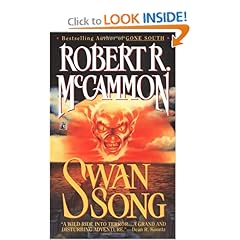The Swan Thieves: A Novel Free Audiobook
Description
Elizabeth Kostova
The many ardent admirers of “The Historian,” Elizabeth Kostova’s 2005 first novel, will be happy to learn that her second book offers plenty of the same pleasures. Like “The Historian,” the new novel ranges across a variety of richly described international locales, both antique and modern. There is once again an assortment of narratives, all of which converge to solve a central mystery. Kostova again pays punctilious attention to the details of her characters’ working lives (archival scholarship in the first book, painting in the second). And although the two novels’ subjects are worlds apart, there is a shared romantic premise, in which the past is forever imposing itself onto the present, the dead onto the living. In the meantime, critics of “The Historian” — fewer than its fans, but vocal nevertheless — will find some of the same irritations in “The Swan Thieves,” beginning with the fact that it’s very long — way too long. Some novels, of course, require a protracted narrative to mimic the gradual mutability of a person or place, while others demand a vast canvas to tell a big story. “The Historian,” after all, was charged with tracking the nature of barbarous despotism in Europe from the time of Vlad the Impaler, in the mid-1400s, to modern days. But Kostova’s new book, set partly in Washington, tells a rather simple story, and its characters, although they sometimes insist otherwise, don’t change radically over time. (All are painters, and they’re not much different, in interest or in outlook, from one another.) Does this tale really need 564 pages to fill in its intricacies — picturesque as they are — or are the extensive speculations about its central aesthetic mystery just too many empty brushstrokes? The troubled and troubling figure around which the novel expands is Robert Oliver, a charismatic and hugely talented contemporary American painter in his early 40s with a style reminiscent of the impressionists. Tall and powerfully built, with the near-mythic “great wingspan” of an archangel or a Greek god, Robert suffers from the all-too-human miseries of artistic obsession. He has recently been arrested for trying to attack a painting called “Leda” in the 19th-century collection at the National Gallery of Art, and lands in a psychiatric facility called Goldengrove in Rockville. There he’s assigned to a doctor named Andrew Marlow, himself a painter who, until now, has regarded his demanding psychiatric practice as merely his day job. After a brief interview with Marlow, Robert refuses to speak for the 11 months he remains at Goldengrove, expressing himself only by compulsively sketching and painting the same mysterious figure: a beautiful young woman in period Victorian clothing. Baffled and fascinated, Marlow embarks on a not-entirely professional quest to understand the origins of Robert’s fixation, traveling to North Carolina, New York and as far as France and Mexico to interview the people who might shed light on the painter’s silent mania. Kostova alternates chapters featuring Marlow’s first-person voice with those of several others — sometimes, as in “The Historian,” in the quaint, slightly fussy form of confessional letters. These perspectives include those of Robert’s ex-wife (a former painter) and an art-school student with whom he became involved for a time. Interspersed among the modern voices are those of a young woman in late-1870s Paris who is an impressionist painter named Béatrice de Clerval, along with her elderly uncle, yet another painter. In addition to moving the story along, all these characters have lots of interesting, intelligent things to say about the actual sensation that accompanies the work of painting — the scratch of sketch, the glop of color, the smell of linseed. If only their observations didn’t all sound so much alike. This was a common complaint about the voices in “The Historian,” and although Kostova’s characterizations are much rounder and fuller this time, she’s still having trouble making people sound different. Here’s a little quiz, to illustrate the point. Which of the following first-person voices belongs to which observer of the natural world: a 52-year-old male psychiatrist, a young woman painter in 1879 and a contemporary female art student? 1. “The morning was gray with mist, clearing in uneven patches overhead to show pellucid sky, the evergreens full of crows and cobwebs, the birches already turning over a few yellow leaves.” 2. “I lay awake for hours . . . feeling and hearing the spruces, the hemlocks, the rhododendron scraping at the partly open window . . . the burgeoning of nature that did not seem to include me.” 3. “The landscape is as lovely as I remember from our visit. . . . The hills are just greening now, and the horizon looks gray-blue, without those fluffy midsummer clouds.” Part of Kostova’s point here, unfortunately, is that the human response to nature and art is uniform and unchanging. It’s unfortunate because this theme, plotted and peopled over nearly 600 pages, has produced a homogenizing effect: If the dead people here seem reasonably animated, the live characters also seem somewhat deadened, smoothed out, impersonal. “He had caught the instant of shock, of total change, of disbelief,” Kostova writes about one of Robert Oliver’s paintings. Regrettably, readers can’t feel quite as convinced about the simulated emotion in “The Swan Thieves.”
64Kbps











